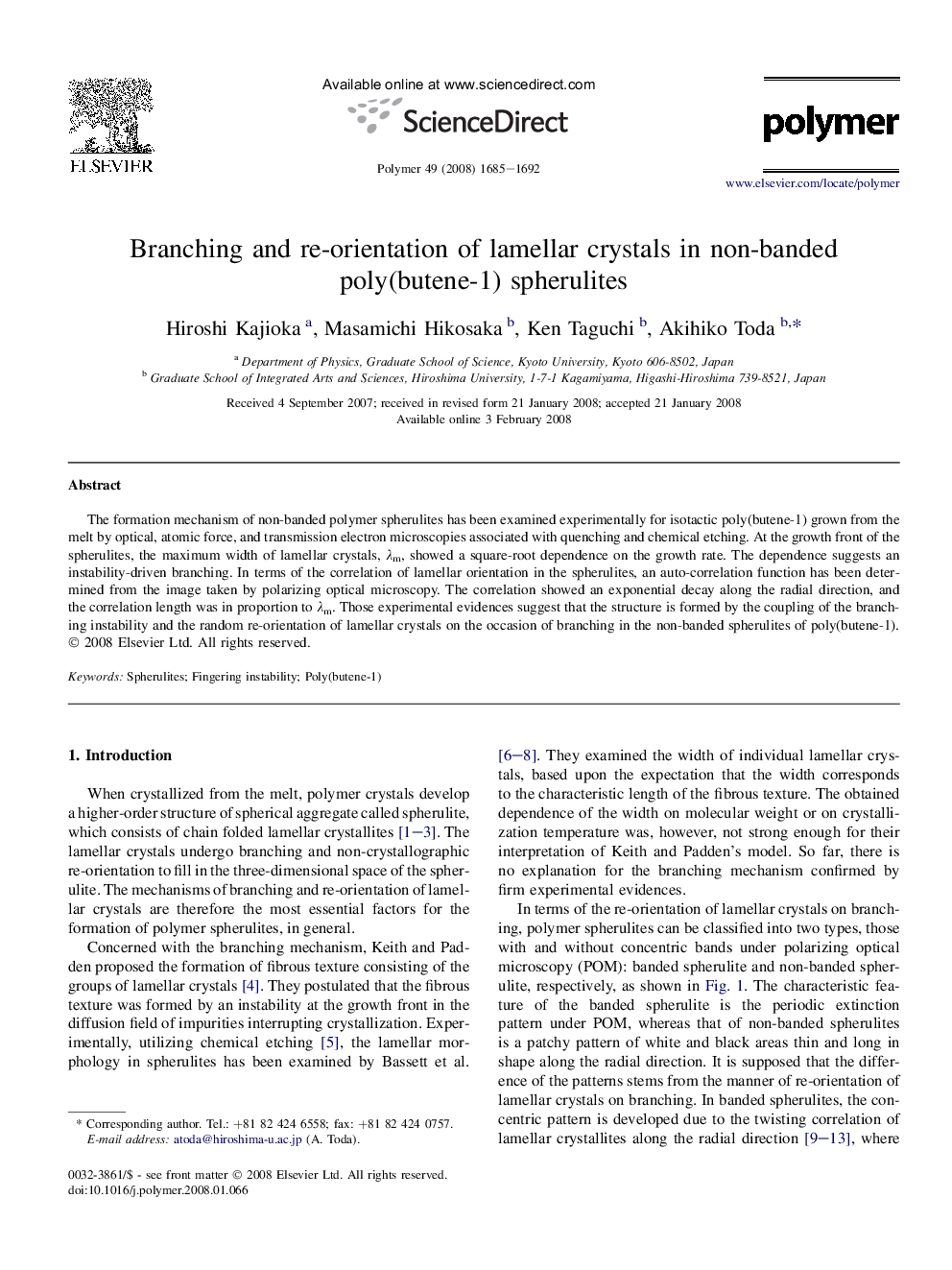| Article ID | Journal | Published Year | Pages | File Type |
|---|---|---|---|---|
| 5187912 | Polymer | 2008 | 8 Pages |
Abstract
The formation mechanism of non-banded polymer spherulites has been examined experimentally for isotactic poly(butene-1) grown from the melt by optical, atomic force, and transmission electron microscopies associated with quenching and chemical etching. At the growth front of the spherulites, the maximum width of lamellar crystals, λm, showed a square-root dependence on the growth rate. The dependence suggests an instability-driven branching. In terms of the correlation of lamellar orientation in the spherulites, an auto-correlation function has been determined from the image taken by polarizing optical microscopy. The correlation showed an exponential decay along the radial direction, and the correlation length was in proportion to λm. Those experimental evidences suggest that the structure is formed by the coupling of the branching instability and the random re-orientation of lamellar crystals on the occasion of branching in the non-banded spherulites of poly(butene-1).
Keywords
Related Topics
Physical Sciences and Engineering
Chemistry
Organic Chemistry
Authors
Hiroshi Kajioka, Masamichi Hikosaka, Ken Taguchi, Akihiko Toda,
